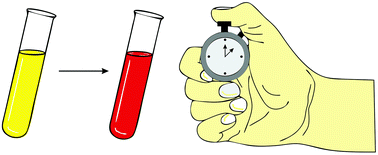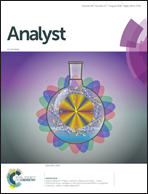Chemical clocks, oscillations, and other temporal effects in analytical chemistry: oddity or viable approach?
Abstract
Most analytical methods are based on “analogue” inputs from sensors of light, electric potentials, or currents. The signals obtained by such sensors are processed using certain calibration functions to determine concentrations of the target analytes. The signal readouts are normally done after an optimised and fixed time period, during which an assay mixture is incubated. This minireview covers another—and somewhat unusual—analytical strategy, which relies on the measurement of time interval between the occurrences of two distinguishable states in the assay reaction. These states manifest themselves via abrupt changes in the properties of the assay mixture (e.g. change of colour, appearance or disappearance of luminescence, change in pH, variations in optical activity or mechanical properties). In some cases, a correlation between the time of appearance/disappearance of a given property and the analyte concentration can be also observed. An example of an assay based on time measurement is an oscillating reaction, in which the period of oscillations is linked to the concentration of the target analyte. A number of chemo-chronometric assays, relying on the existing (bio)transformations or artificially designed reactions, were disclosed in the past few years. They are very attractive from the fundamental point of view but—so far—only few of them have be validated and used to address real-world problems. Then, can chemo-chronometric assays become a practical tool for chemical analysis? Is there a need for further development of such assays? We are aiming to answer these questions.

- This article is part of the themed collection: Recent Review Articles


 Please wait while we load your content...
Please wait while we load your content...